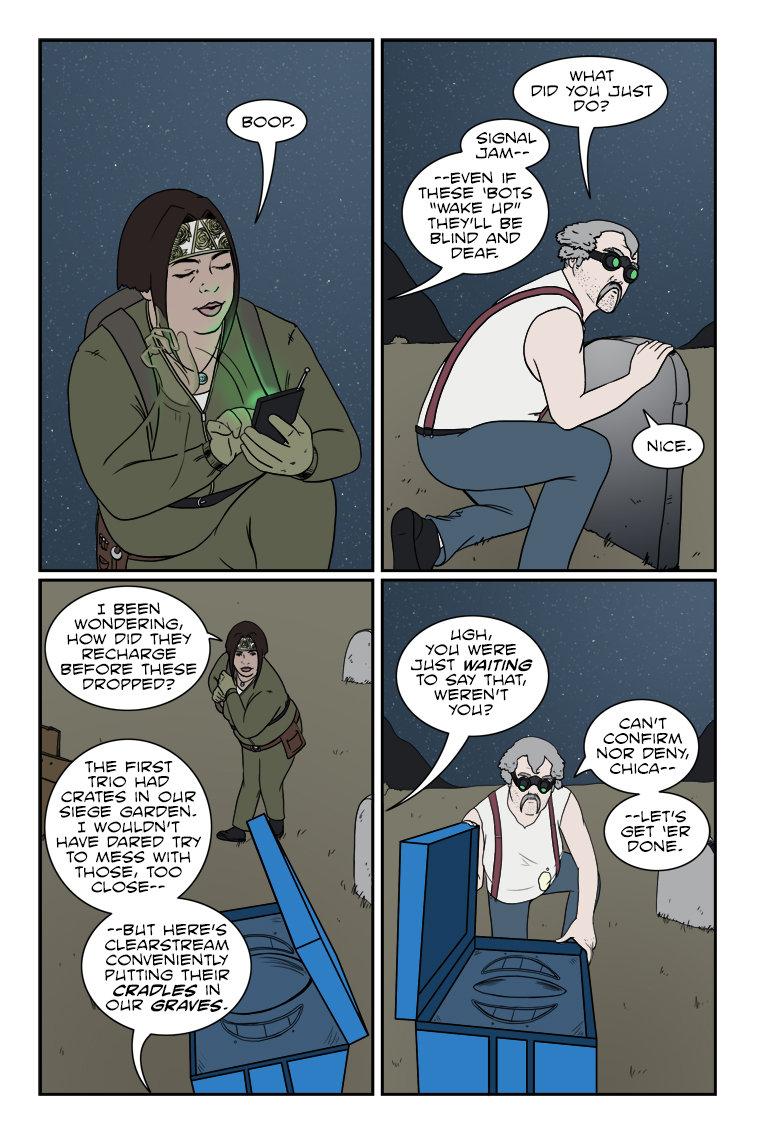Cart
Product categories
Support Us!
If you like what I do please support us on Ko-fi or Patreon.
Follow Us!
Join Our Newsletter!
Vote For Us!
Login
Polls
Events
-
Pasadena Comic Con
Dates: May 24
Location: Pasadena Convention Center, 300 E Green St, Pasadena, CA 91101, USA ( MAP)Details:We will be at the Pasadena Comic Con on January 26th. See some of you there for this one day event!
Purchase tickets online at here: https://www.tixr.com/groups/pcc/events/pasadenacomiccon-pasadena-comic-con-2025-115248
-
San Diego Comic Con: SP-N7
Dates: Jul 23 - 27
Location: San Diego Convention Center, 111 Harbor Dr, San Diego, CA 92101, USA ( MAP)Details:Clint & Dawn Wolf will be at San Diego Comic Con, as Lab Reject Studios. We will be at booth N7 in Small Press.









3 thoughts on “543 – Cradles And Graves”
Keith
Oh lordy, they really are a great couple…though, I suggest adopting.
Anonymous
Consequences be damned, because doing nothing might be worse.
Tommyguada
hi
Latest Comics
#546. 524 – Stopped Watch
88 Mar 06, 2024
#545. 523 – Canned Responses
87 Feb 14, 2024
#544. 522 – No Flocks Given
70 Jan 24, 2024
#543. 521 – Darkest Lunch
57 Jan 10, 2024
#542. 520 – Re-run Reflection
159 Oct 18, 2023
#541. 519 – Blowin’ Up
65 Oct 04, 2023
#540. 518 – International Phrasing
69 Sep 20, 2023
#539. 517 – New In Rotation
401 Sep 06, 2023
#538. 516 – Viva Los Flores
68 Aug 09, 2023
#537. EPISODE TWENTY-TWO
56 Aug 07, 2023
#536. 515 – Guess Who’s Coming To Dinner? (END OF EPISODE 21)
61 Jun 28, 2023
#535. 514 – Having A Fling
56 Jun 14, 2023
#534. 513 – Social Deferred
67 May 31, 2023
#533. 512 – Guarded Enthusiasm
84 May 03, 2023
#532. 511 – Nutz To That
62 Apr 19, 2023
#531. 510 – “Whats” For Dinner
63 Apr 05, 2023
#530. 509 – Tailgate Telltale
63 Mar 15, 2023
#529. 508 – Name Games
65 Mar 01, 2023
#528. 507 – Name And Date
67 Feb 15, 2023
#527. 506 – Canned Laughter
61 Feb 01, 2023
Latest Chapters
Episode 22
Episode 21
Episode 20
Episode 19
Episode 18
Episode 17
543 – Cradles And Graves
Chuck sez: "Never let a covert operation get in the way of a bad pun."
Playing favorites…
Calendar
BlueSky Latest Posts
Writer’s Blog Archives